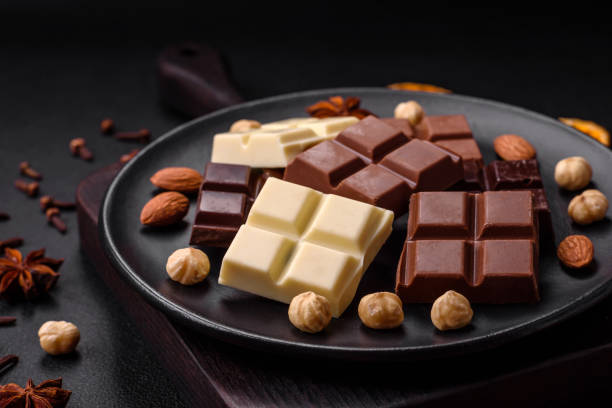How Long To Cook 3 Lb Meatloaf? | Time And Temperature
Crafting the perfect meatloaf is an art that combines the right blend of ingredients, seasoning, and, most crucially, cooking time. When it comes to preparing a 3 lb meatloaf, understanding the nuances of cooking time is essential to ensure a moist, flavorful, and thoroughly cooked masterpiece that will be the highlight of any dining table. In this comprehensive guide titled “How Long To Cook 3 Lb Meatloaf,” we delve deep into the heart of meatloaf preparation, offering expert advice and insider tips that demystify the process.
With years of culinary experience and countless meatloaves perfected, we bring you a detailed exploration of not just the ‘how,’ but the ‘why’ behind the cooking times. This article is designed not only to provide you with a simple answer but to equip you with the knowledge to tailor the cooking process to your taste preferences and oven idiosyncrasies. From understanding the importance of internal temperature to the impact of ingredients on cooking duration, we cover it all.
Moreover, we understand the value of your time and the importance of getting that meatloaf just right – juicy on the inside with a deliciously crispy outer layer. Whether you’re a seasoned chef or a home cook looking to impress, this guide promises to elevate your meatloaf game, ensuring that your 3 lb creation becomes the talk of the town.
So, if you’re curious about how to achieve that perfect balance of texture and taste, or if you’re simply looking for a way to avoid the common pitfalls that lead to a dry or undercooked meatloaf, you’re in the right place. Join us as we embark on this culinary journey, and let’s unlock the secrets to cooking the ultimate 3 lb meatloaf.
Contents
- 1 The Evolution and Cultural Significance of Meatloaf
- 2 The Basics of Meatloaf
- 3 Mixing and Shaping Your Meatloaf
- 4 Cooking Meatloaf to Perfection
- 5 Cooking Methods Explored
- 6 Enhancing Flavor and Texture
- 7 Mastering the Perfect Moist Meatloaf
- 8 Making Meatloaf Healthier
- 9 Global Meatloaf Creations
- 10 Advanced Meatloaf Tips and Tricks
- 11 Wine Pairing Suggestions
- 12 Troubleshooting and Food Safety Tips
- 13 Sustainable Meat and Environmental Impact
- 14 Conclusion
The Evolution and Cultural Significance of Meatloaf

Meatloaf has humble origins. One of the earliest known recipes comes from the Roman cookbook Apicius, which dates back to the 5th century. While the classical recipe bears little resemblance to modern meatloaf, it shows the long tradition of recombining meat mixtures and shaping them into loaves.
In America, meatloaf gained popularity during the Great Depression as a way to stretch expensive meat and make it feed more people. Housewives got creative with fillers and toppings to spice up inexpensive ingredients. By the 1950s, meatloaf had gained a reputation as an old-fashioned, unfussy dinner ideal for busy home cooks.
Today, meatloaf retains its image as a nostalgic slice of Americana. Many associate it with comforting homecooked meals, often learned from family recipes passed down through generations. It remains a budget-friendly family dinner, but has also been elevated by renowned chefs who have put modern twists on the classic.
The Basics of Meatloaf
A typical meatloaf contains the following ingredients:
- Ground Meat – Most traditional recipes call for ground beef, but ground turkey, pork, veal or a mix can also be used.
- A Binder – Eggs and breadcrumbs help bind the meat together. Crackers, oats or mashed vegetables work too.
- Aromatics – Onion, garlic, carrots and celery add moisture and flavor.
- Seasonings – Salt, pepper, herbs and spices like oregano, thyme, paprika, Worcestershire.
- Moisture – Milk, broth, ketchup, yogurt or pureed veggies keep meatloaf from drying out.
- Fats – Adding bacon, beef suet or oils enriches and tenderizes the loaf.
Those avoiding common allergens or animal products can use alternative binders like flaxseed, nuts or sautéd mushrooms in place of eggs and bread. Spices like cumin, chili powder and ginger lend global flavor profiles.
Mixing and Shaping Your Meatloaf
Proper mixing is key to ensure your meatloaf doesn’t end up dense or dry:
- Hand mixing using light pressure helps blend ingredients without overworking the proteins.
- Chill the mixed meat in the refrigerator for 30-60 minutes. This firms it up for easier shaping.
- Wet your hands before shaping to prevent sticking. Gently pat into an oval or round loaf shape.
- Place in a lightly greased loaf pan or shape free-form on a baking sheet lined with parchment.
Cooking Meatloaf to Perfection
Cooking meatloaf evenly and to the proper doneness requires care and accuracy:
- Always preheat your oven for at least 15-20 minutes at 350°F. Use an oven thermometer to check calibration.
- Place loaf on a middle oven rack for even browning. Tent with foil if browning too quickly.
- Cook until an instant-read thermometer inserted in the center reads 160°F.
- Rest for 10-15 minutes before slicing for juicy results.
Cooking Methods Explored
While the traditional oven method works well, there are alternatives:
Oven Baking
- Classic technique allows flavor development from dry heat
- Hot oven sears the exterior to lock in moisture
- Loaf pans or free-form shaping on baking sheets work
Slow Cooker
- Convenient “set and forget” hands-off method
- Cooks evenly in moist environment without drying
- Can shorten cook time compared to oven
- Good for flavor incorporation but lose crust
Air Fryer
- Quicker cooking than oven with crispy exterior
- Circulation of hot air mimics deep frying
- Smaller batches needed to fit in air fryer basket
- Excellent technique for meatloaf sliders or muffins
Enhancing Flavor and Texture
There are many ways to infuse even more flavor and moisture into your meatloaf:
- Mix in finely minced mushrooms, olives, sundried tomatoes or other savory ingredients
- Make a tunnel through the center to stuff with cheese, roasted peppers or spinach
- Coat the loaf with tomato paste, pesto or mustard before cooking
- Top with ketchup glaze or sprinkle with brown sugar, barbecue or hot sauce
- Wrap in bacon for delicious seasoning, fat and crispy texture
Mastering the Perfect Moist Meatloaf
Dry meatloaf is a cardinal sin. Here are tips for sublime moisture:
- Include milk, yogurt or pureed veggies in the base mix
- Don’t overmix once liquids are added to prevent toughening
- Allow loaf to rest before slicing to redistribute juices
- Insert slivers of fatback, bacon or calf’s liver for moisture pockets
- Baste frequently during baking with pan drippings or sauce glaze
Making Meatloaf Healthier
For a nutritious twist, make these ingredient swaps:
- Use 90/10 ground turkey or bison in place of some beef
- Replace breadcrumbs with rolled oats or quinoa
- Mix in shredded zucchini, spinach or kale for veggies
- Substitute olive or avocado oil for butter or beef fat
- Skip the fatty glaze and season with fresh herbs, spices and citrus instead
Global Meatloaf Creations
Meatloaf takes on delicious local flavors around the world:
- French – Pork, duck fat, herbs, Dijon mustard, cornichons
- Greek – Lamb, feta, spinach, lemon, oregano, tzatziki glaze
- Italian – Veal, prosciutto, ricotta, tomato sauce, mozzarella topping
- Mexican – Beef, chili peppers, cumin, salsa glaze, avocado garnish
- Cajun – Andouille sausage, crawfish, creole seasoning, okra
- Indian – Chicken, garam masala, yogurt, golden raisins, toasted nuts
Advanced Meatloaf Tips and Tricks

Take your meatloaf to the next level with expert techniques:
- Mix in rehydrated dried mushrooms for intense savory flavor
- Spread a vegetable puree on the bottom to prevent sticking
- Shape meat with a cylindrical cutter for consistent slices
- Sear all sides on the stovetop before oven baking
- Layer flavors by pressing stuffings into the loaf
- Brine ground meat for enhanced juiciness and seasoning
Wine Pairing Suggestions
Complement your meatloaf with these wine pairing options:
- Cabernet Sauvignon – Strong structured red pairs with beef
- Zinfandel – Peppery and jammy notes work with tomato glazes
- Chianti Classico – Earthy Italian red cuts through rich umami flavors
- Beaujolais – Light and fruity red won’t overpower softer meatloaf varieties
- Rosé – Fresh acidic pink wine brightens and refreshes
Troubleshooting and Food Safety Tips
Avoid common meatloaf mistakes with these tips:
- If loaf won’t hold its shape, refrigerate mix before shaping. Add more breadcrumbs or egg if still crumbly.
- For a dense or dry texture, check oven temp and use a thermometer. Don’t overmix ingredients.
- If loaf falls apart when slicing, allow to rest before cutting. Mix in more binders.
- Always wash hands and cooking tools after handling raw meat. Discard used marinades.
- Cook to safe internal temperature of 160°F. Leftovers should be refrigerated within 2 hours.
Sustainable Meat and Environmental Impact
When sourcing meat, consider these eco-friendly options:
- Pasture-raised beef has a reduced carbon footprint from regenerative grazing
- Local farms minimize transport emissions for your meat
- Organic operations encourage ethical animal welfare practices
Choosing plant-based mains like lentil loaf or mushroom “meatloaf” also reduces environmental impact.
Conclusion
If you are looking for a delicious and satisfying meal that is also healthy and easy to prepare, then meatloaf may be the perfect option for you. To ensure that your meatloaf stays moist and tender while cooking, it is important to use high quality, lean ground meat, carefully measure all of your ingredients, and take care when mixing and kneading the mixture. Additionally, you may want to consider draining off some of the grease or using a different sauce or topping on your meatloaf in order to achieve your desired level of crispiness and flavor. Whatever side dishes you choose to serve with your meatloaf, be sure to enjoy it.
https://bamboowokmanvel.com/food-drink/cooking-recipes/
Harmony Saunders is the CEO and founder of Bamboo Wok, a family-owned and operated Chinese restaurant that has been serving the Manvel, Rosharon, and Alvin communities for more than nine years. Our delicious dishes are made from scratch with the best ingredients, vegetables are fresh cut daily in our kitchen, and poultry is delivered every two days.
So whether you’re craving Chinese food for the family or need catering for your next event, please give us a try! We know you won’t be disappointed with our fresh, authentic Asian fare.



















